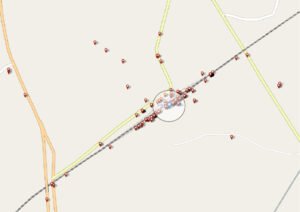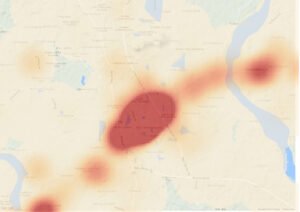Geofence is one of the most used location tool that serve variety of purpose. Currently location-based advertising is the ‘most exciting’ mobile opportunity that is heavily dependent upon a Geofence. So for eg. a particular advertisement is to be shown to a user ,when user enters a coffee house or a Shopping mall ,a geofence need to be created around that location.
A geofence can be looked upon as a virtual perimeter that you can draw around any location on a map, and then target customers that enter or leave that location.

So all users who fall within the cirlce of chosen location (which can be any Point of Interest) are assumed to at that location and chosen for further action for advertisement.This method of traditional Geofencing works fine for big places like parks or Walmarts. But in dense areas like cities, airports, and malls (not to mention multi-story buildings, where places are stacked on top of each other), it breaks down.Also source of location which can either be GPS or AGPS do give some error there by leading user to fall in or out of geofence.
To resolve above issue data engineers started looking at location history data of users and understand changes in user location around that particular point of interest. So unlike a traditional circular geofence what was achieved is something as below.
This is far more accurate assumption to build a geofence which is build by studying history data of lot of other users. Foursquare Pilgrim is based on same concept.

We at EulersLab understand location data,do get in touch for any requirement with respect to location.



Avesh